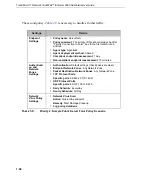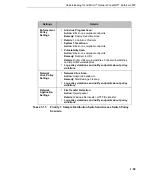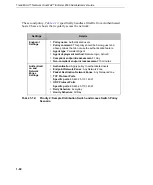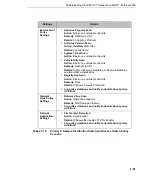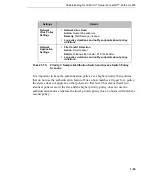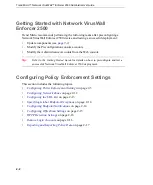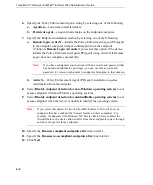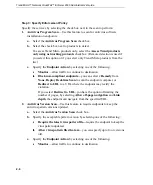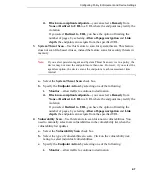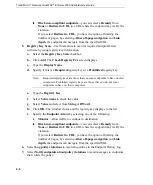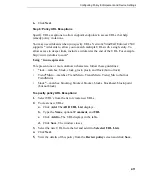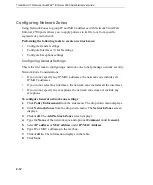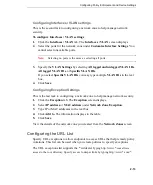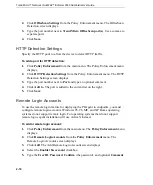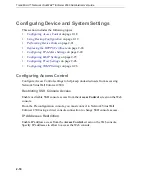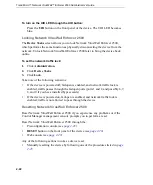
Configuring Policy Enforcement and Device Settings
2
-
7
ii.
Block non-compliant endpoints—
you can select a
Remedy
from
None
or
Redirect to URL
to a URL where the endpoint may rectify the
violation.
If you select
Redirect to URL
, you have the option of limiting the
number of pages, by selecting
Allow off-page navigation
and
Link
depth
, the endpoint can navigate from the specified URL.
3.
System Threat Scan
—Use this feature to scan for system threats. This feature
does not scan file-based viruses, instead the feature scans for security threats in
memory.
Note:
If you select persistent agent and System Threat Scan service in a policy, the
device may not scan the endpoint more than once. However, if you select the
agentless option, the device scans the endpoint at each reassessment time
interval.
a.
Select the
System Threat Scan
check box.
b.
Specify the
Endpoint Action
by selecting one of the following:
i.
Monitor
—allow traffic to continue to destination
ii.
Block non-compliant endpoints—
you can select a
Remedy
from
None
or
Redirect to URL
to a URL where the endpoint may rectify the
violation.
If you select
Redirect to URL
, you have the option of limiting the
number of pages, by selecting
Allow off-page navigation
and
Link
depth
, the endpoint can navigate from the specified URL.
4.
Vulnerability Scan
—Use this feature to scan for known vulnerabilities. You
need to manually select new vulnerabilities in the vulnerability list when the
vulnerability list updates.
a.
Select the
Vulnerability Scan
check box
b.
Select the type of vulnerabilities to scan. Click on the vulnerability risk
rating to select individual vulnerabilities.
c.
Specify the
Endpoint Action
by selecting one of the following:
i.
Monitor
—allow traffic to continue to destination

